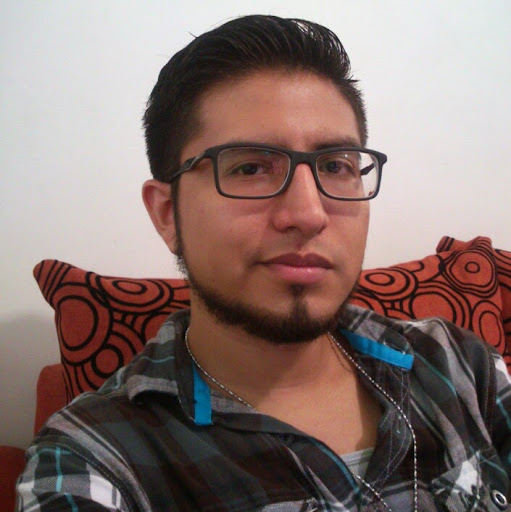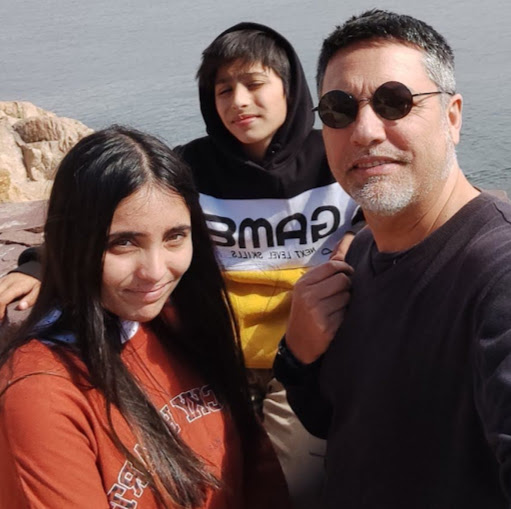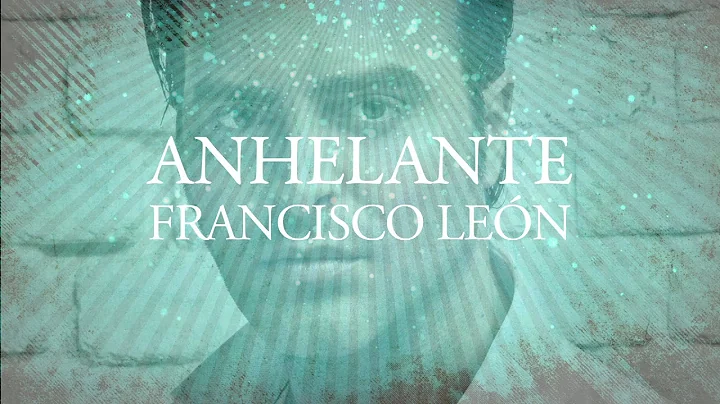Francisco Jesus Leon
age ~65
from Oakland, CA
- Also known as:
-
- Francisco J Leon
- Francisco L Leon
- Fran Cisco Leon
- Francisco Leon Beltran
- Francisc O Leon
- Francisco D Beltran
- Leon Leon
- Francisco Jleon
- Leon Francisco
- Phone and address:
-
433 Phelps St, Oakland, CA 94603
5106329458
Francisco Leon Phones & Addresses
- 433 Phelps St, Oakland, CA 94603 • 5106329458
- Los Angeles, CA
- Hayward, CA
- Alameda, CA
Lawyers & Attorneys

Francisco Leon - Lawyer
view sourceOffice:
Vicens, Alvarez & Sturla (VAS)
Specialties:
Corporate, Banking and Financial Services
Insurance
Commercial Litigation
Tourism
Food and Beverage
Taxation
Labour Law
Insurance
Commercial Litigation
Tourism
Food and Beverage
Taxation
Labour Law
ISLN:
918734271
Admitted:
2000
Resumes

Francisco De Leon Las Vegas, NV
view sourceWork:
MSB Designs
2006 to 2000
Tailor OnStage Entertainment
Las Vegas, NV
2007 to 2010 College of Southern Nevada
Las Vegas, NV
2003 to 2010 Francisco's Dry Cleaners
Torrance, CA
1980 to 1985
Owner Ponce De Leon Tailoring
Carson, CA
1973 to 1980
Owner
2006 to 2000
Tailor OnStage Entertainment
Las Vegas, NV
2007 to 2010 College of Southern Nevada
Las Vegas, NV
2003 to 2010 Francisco's Dry Cleaners
Torrance, CA
1980 to 1985
Owner Ponce De Leon Tailoring
Carson, CA
1973 to 1980
Owner

Francisco De Leon Los Angeles, CA
view sourceWork:
Cornerstone Theater Company
Los Angeles, CA
Jun 2014 to Sep 2014
Build Crew Cornerstone Theater Company
Los Angeles, CA
Mar 2013 to Aug 2013
Sound board operator, Internship Technical Theater
Mar 2008 to Mar 2013
Los Angeles, CA
Jun 2014 to Sep 2014
Build Crew Cornerstone Theater Company
Los Angeles, CA
Mar 2013 to Aug 2013
Sound board operator, Internship Technical Theater
Mar 2008 to Mar 2013
Education:
Los Angeles hs of the Arts
Los Angeles, CA
Apr 2000 to Jun 2014
High School Diploma Los Angeles City College
Los Angeles, CA
Apr 2000 to Jun 2013
Certificate in introduction to Stage Craft Santa Monica College
Los Angeles, CA
Apr 2000
Theater/Technical Direction
Los Angeles, CA
Apr 2000 to Jun 2014
High School Diploma Los Angeles City College
Los Angeles, CA
Apr 2000 to Jun 2013
Certificate in introduction to Stage Craft Santa Monica College
Los Angeles, CA
Apr 2000
Theater/Technical Direction
Name / Title
Company / Classification
Phones & Addresses
Property Manager
Westlake Development Group, LLC
Operators of Nonresidential Buildings
Operators of Nonresidential Buildings
520 S El Camino Real # 900, San Mateo, CA 94402
Principal
Ads Cargonet-Shipping Corp
Direct Mail Advertising Services
Direct Mail Advertising Services
Psi-Squared Software, LLC
Prepackaged Software Services
Prepackaged Software Services
777 Addison Ave, Palo Alto, CA 94301
Owner
Leon Entertainment
Entertainer/Entertainment Group
Entertainer/Entertainment Group
3480 Troy Dr, Los Angeles, CA 90068
President
THE BAY AREA SELECT JAZZ ENSEMBLE
Theatrical Producers/Services
Theatrical Producers/Services
206 Frst Park Dr, Pacifica, CA 94044
Property Manager
WESTLAKE DEVELOPMENT GROUP, LLC
Property Management, Property Developmen · Nonresdentl Bldg Operatr Apt Building Operator Real Estate Agent/Mgr
Property Management, Property Developmen · Nonresdentl Bldg Operatr Apt Building Operator Real Estate Agent/Mgr
520 S El Camino Real, San Mateo, CA 94402
6505791010, 6503408252
6505791010, 6503408252
Mirror Flow Productions LLC
Ret Misc Homefurnishings
Ret Misc Homefurnishings
71 Glenn Way, San Carlos, CA 94070
71 Glenn Way Ave, San Carlos, CA 94070
71 Glenn Way Ave, San Carlos, CA 94070
President
MIMI'S TRANSPORT, INC
Transportation Services
Transportation Services
7376 Syracuse Ave, Stanton, CA 90680
Us Patents
-
Method Of Fabrication To Sharpen Corners Of Y-Branches In Integrated Optical Components And Other Micro-Devices
view source -
US Patent:6730988, May 4, 2004
-
Filed:Jan 8, 2003
-
Appl. No.:10/338435
-
Inventors:Francisco A. Leon - Palo Alto CA
Everett X. Wang - San Jose CA -
Assignee:Intel Corporation - Santa Clara CA
-
International Classification:H01L 2906
-
US Classification:257618, 216 85, 385 45
-
Abstract:Substantially sharp corners for optical waveguides in integrated optical devices, photonic crystal devices, or for micro-devices, can be fabricated. Non-sharp corners such as rounded corners, are first formed using lithographic patterning and vertical etching. Next, isotropic etching is used to sharpen the rounded corners. A monitor can be used to determine if the rounded corners have been sufficiently sharpened by the isotropic etching.
-
Method Of Fabrication To Sharpen Corners Of Y-Branches In Integrated Optical Components And Other Micro-Devices
view source -
US Patent:6818559, Nov 16, 2004
-
Filed:Mar 21, 2001
-
Appl. No.:09/814424
-
Inventors:Francisco A. Leon - Palo Alto CA
Everett X. Wang - San Jose CA -
Assignee:Intel Corporation - Santa Clara CA
-
International Classification:H01L 21311
-
US Classification:438700, 438701, 438689, 438 25, 438 26, 216 24, 216 11
-
Abstract:Substantially sharp corners for optical waveguides in integrated optical devices, photonic crystal devices, or for micro-devices, can be fabricated. Non-sharp corners such as rounded corners, are first formed using lithographic patterning and vertical etching. Next, isotropic etching is used to sharpen the rounded corners. A monitor can be used to determine if the rounded corners have been sufficiently sharpened by the isotropic etching.
-
Maskless Fabrication Of Waveguide Mirrors
view source -
US Patent:7001788, Feb 21, 2006
-
Filed:May 28, 2004
-
Appl. No.:10/858524
-
Inventors:Francisco A. Leon - Palo Alto CA, US
Lawrence C. West - San Jose CA, US
Gregory L. Wojcik - Ben Lomond CA, US
Yuichi Wada - Tomisato, JP -
Assignee:Applied Materials, Inc. - Santa Clara CA
-
International Classification:H01L 21/00
-
US Classification:438 31
-
Abstract:A method of fabricating a waveguide mirror that involves etching a trench in a silicon substrate; depositing a film (e. g. silicon dioxide) over the surface of the silicon substrate and into the trench; ion etching the film to remove at least some of the deposited silicon dioxide and to leave a facet of film in inside corners of the trench; depositing a layer of SiGe over the substrate to fill up the trench; and planarizing the deposited SiGe to remove the SiGe from above the level of the trench.
-
Embedded Waveguide Detectors
view source -
US Patent:7075165, Jul 11, 2006
-
Filed:May 28, 2004
-
Appl. No.:10/856750
-
Inventors:Francisco A. Leon - Palo Alto CA, US
Lawrence C. West - San Jose CA, US
Yuichi Wada - Tomisato, JP
Gregory L. Wojcik - Ben Lomond CA, US
Stephen Moffatt - Jersey, GB -
Assignee:Applied Material, Inc. - Santa Clara CA
-
International Classification:H01L 31/075
-
US Classification:257458, 257438
-
Abstract:A method of fabricating a detector that involves: forming a trench in a substrate, the substrate having an upper surface; forming a first doped semiconductor layer on the substrate and in the trench; forming a second semiconductor layer on the first doped semiconductor layer and extending into the trench, the second semiconductor layer having a conductivity that is less than the conductivity of the first doped semiconductor layer; forming a third doped semiconductor layer on the second semiconductor layer and extending into the trench; removing portions of the first, second and third layers that are above a plane defined by the surface of the substrate to produce an upper, substantially planar surface and expose an upper end of the first doped semiconductor layer in the trench; forming a first electrical contact to the first semiconductor doped layer; and forming a second electrical contact to the third semiconductor doped layer.
-
Solution To Thermal Budget
view source -
US Patent:7101725, Sep 5, 2006
-
Filed:Jul 22, 2004
-
Appl. No.:10/896754
-
Inventors:Yuichi Wada - Tomisato, JP
Francisco A. Leon - Palo Alto CA, US -
Assignee:Applied Materials, Inc. - Santa Clara CA
-
International Classification:H01L 21/00
-
US Classification:438 65, 257E21529
-
Abstract:A method of fabricating on optical detector, the method including providing a substrate that includes an optical waveguide formed therein and having a surface for fabricating microelectronic circuitry thereon; fabricating microelectronic circuitry on the substrate, the fabricating involving a plurality of sequential process phases; after a selected one of the plurality of sequential process phases has occurred and before the next process phase after the selected one of the plurality of process phases begins, fabricating an optical detector within the optical waveguide; and after fabricating the optical detector in the waveguide, completing the plurality of sequential process phases for fabricating the microelectronic circuitry.
-
Impurity-Based Waveguide Detectors
view source -
US Patent:7151881, Dec 19, 2006
-
Filed:May 28, 2004
-
Appl. No.:10/856127
-
Inventors:Lawrence C. West - San Jose CA, US
Thomas P. Pearsall - Paris, FR
Francisco A. Leon - Palo Alto CA, US
Stephen Moffatt - Jersey, GB -
Assignee:Applied Materials, Inc. - Santa Clara CA
-
International Classification:G02B 6/10
-
US Classification:385129, 385 40, 385 14, 372 64
-
Abstract:An optical circuit including a semiconductor substrate; an optical waveguide formed in or on the substrate; and an optical detector formed in or on the semiconductor substrate, wherein the optical detector is aligned with the optical waveguide so as to receive an optical signal from the optical waveguide during operation, and wherein the optical detector has: a first electrode; a second electrode; and an intermediate layer between the first and second electrodes, the intermediate layer being made of a semiconductor material characterized by a conduction band, a valence band, and deep level energy states introduced between the conduction and valence bands.
-
Self-Aligned Implanted Waveguide Detector
view source -
US Patent:7205624, Apr 17, 2007
-
Filed:Oct 6, 2004
-
Appl. No.:10/959897
-
Inventors:Francisco A. Leon - Palo Alto CA, US
Lawrence C. West - San Jose CA, US -
Assignee:Applied Materials, Inc. - Santa Clara CA
-
International Classification:H01L 31/00
-
US Classification:257458, 257184
-
Abstract:A method of fabricating a detector, the method including forming an island of detector core material on a substrate, the island having a horizontally oriented top end, a vertically oriented first sidewall, and a vertically oriented second sidewall that is opposite said first sidewall; implanting a first dopant into the first sidewall to form a first conductive region that has a top end that is part of the top end of the island; implanting a second dopant into the second sidewall to form a second conductive region that has a top end that is part of the top end of the island; fabricating a first electrical connection to the top end of the first conductive region; and fabricating a second electrical connection to the top end of the second conductive region.
-
Fully Integrated Organic Layered Processes For Making Plastic Electronics Based On Conductive Polymers And Semiconductor Nanowires
view source -
US Patent:7345307, Mar 18, 2008
-
Filed:Sep 22, 2005
-
Appl. No.:11/233503
-
Inventors:Yaoling Pan - Union City CA, US
Francisco Leon - Palo Alto CA, US
David P. Stumbo - Belmont CA, US -
Assignee:Nanosys, Inc. - Palo Alto CA
-
International Classification:H01L 29/10
-
US Classification:257 57, 257 40, 257 72, 257347, 257E21007, 977762, 977763, 977764
-
Abstract:The present invention is directed to thin film transistors using nanowires (or other nanostructures such as nanoribbons, nanotubes and the like) incorporated in and/or disposed proximal to conductive polymer layer(s), and production scalable methods to produce such transistors. In particular, a composite material comprising a conductive polymeric material such as polyaniline (PANI) or polypyrrole (PPY) and one or more nanowires incorporated therein is disclosed. Several nanowire-TFT fabrication methods are also provided which in one exemplary embodiment includes providing a device substrate; depositing a first conductive polymer material layer on the device substrate; defining one or more gate contact regions in the conductive polymer layer; depositing a plurality of nanowires over the conductive polymer layer at a sufficient density of nanowires to achieve an operational current level; depositing a second conductive polymer material layer on the plurality of nanowires; and forming source and drain contact regions in the second conductive polymer material layer to thereby provide electrical connectivity to the plurality of nanowires, whereby the nanowires form a channel having a length between respective ones of the source and drain regions.
License Records
Francisco Leon
License #:
797 - Active
Category:
Tow Truck Operator (Consent Tow)
Expiration Date:
Jun 20, 2017
Francisco J. Leon
License #:
AC38604 - Active
Category:
Certified Public Accounting
Issued Date:
May 10, 2006
Effective Date:
May 10, 2006
Expiration Date:
Dec 31, 2018
Type:
Accountant
Classmates

Porter High School, Brown...
view sourceGraduates:
Raul Martinez (1996-2000),
Charlene Solitaire (1998-2002),
Jesus Sanchez (1997-2001),
Francisco de Leon (1980-1984),
Leticia Esparza (1975-1979)
Charlene Solitaire (1998-2002),
Jesus Sanchez (1997-2001),
Francisco de Leon (1980-1984),
Leticia Esparza (1975-1979)

Forrest County High Schoo...
view sourceGraduates:
Rachel Anderson (1998-2002),
Francisco Francisco de Leon (1981-1985),
Thomas Fortenberry (1963-1967)
Francisco Francisco de Leon (1981-1985),
Thomas Fortenberry (1963-1967)
Youtube
Myspace

francisco (francisco De L...
view sourceMySpace profile for francisco De Leon. Find friends, share photos, keep in touch with classmates, and meet new people on MySpace.
Googleplus

Francisco Leon
Work:
Noíl Telecomunicaciones - Programador (2012)
Education:
UPIICSA - Ingeniería en Informática, CECyT 13 "Ricardo Flores Magón" - Técnico en Informática
About:
Nacido en Veracruz, me gustan mucho los video-juegos, me gusta programar.
Bragging Rights:
Participacion en el evento "Prototipos" Interpolitécnicos a nivel medio superior 2009

Francisco Leon
Work:
TI Quebeca
Education:
HEC Montréal
About:
SEO: Plus de 5 ans d’expérience dans le marketing d’affaires et de la technologie. Une connaissance approfondie du domaine de positionnement SEO / SEM. Facile à exécuter et d’interagir avec des groupe...
Bragging Rights:
SEO Spécialist

Francisco Leon
Work:
SIE - SHIRTS - Socio (2009)
Education:
Cetys Universidad - Ing. Mecanica

Francisco Leon
Work:
Teletech - ASG (2004)
Education:
Instituto Tecnológico de León - Ing. Sistemas Computacionales

Francisco Leon
Education:
Universidad de Valparaíso - Arquitecto

Francisco Leon
Work:
Francisco Leon INC - Vagrant (12)

Francisco Leon
Work:
Taqueria "El Amigo" - Taquero (2012)

Francisco Leon
Tagline:
Me gusta hacer mucho ejercicio??
Flickr
Plaxo

francisco de leon
view sourcenew york
Get Report for Francisco Jesus Leon from Oakland, CA, age ~65


















